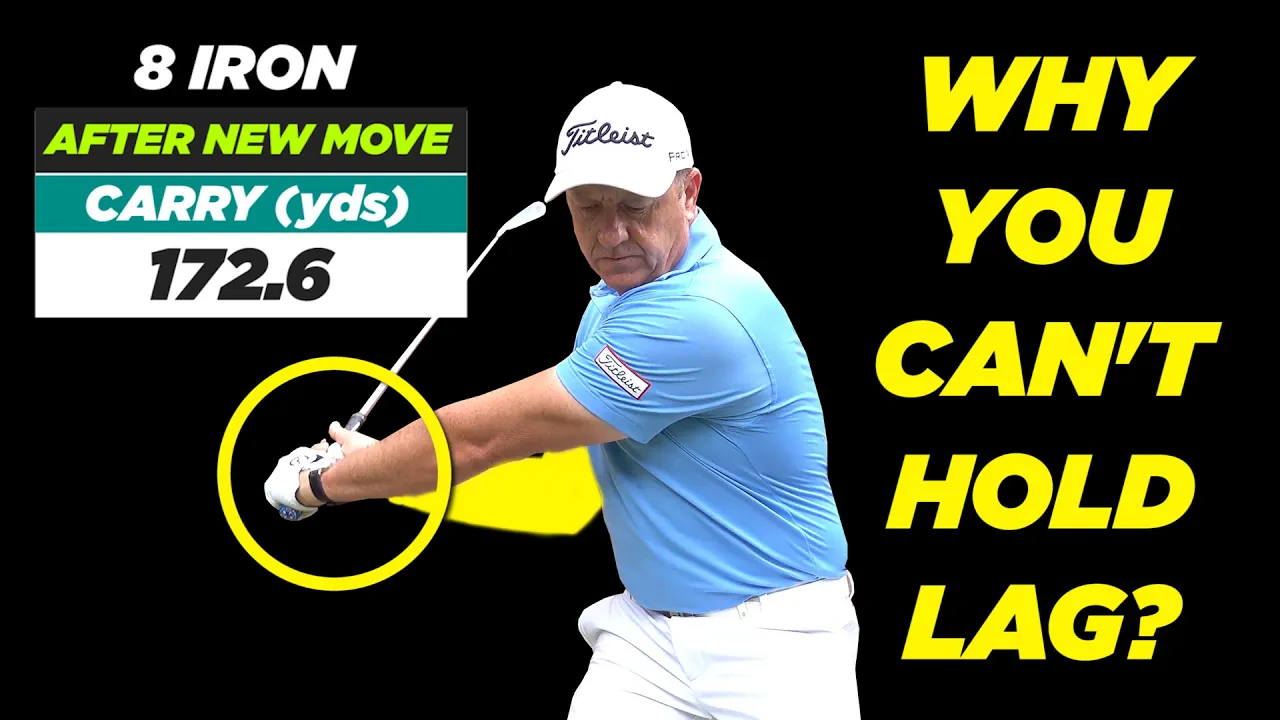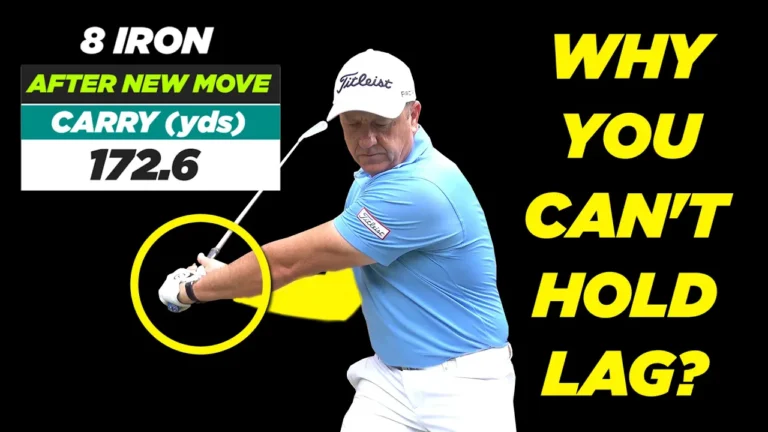
Uncover the secret behind effortless power in your golf swing. Discover how understanding and maintaining lag can revolutionize your game and transform you from an amateur to a pro-worthy player on the course.
Table of Contents
The Key Distinction: Lag in Golf Swings
Lag is crucial for a powerful golf swing. It’s the angle between your lead arm and the club shaft during the downswing, enabling energy storage for a powerful impact. Amateur golfers often lose this lag too soon, which diminishes swing effectiveness. Focus on maintaining lag to maximize your swing’s power.
Lag is like a spring—compress it for as long as possible to unleash maximum power.
Understanding Lag: Building Energy for Speed
By maintaining the angle between your arms and club, you store energy that releases at impact, boosting clubhead speed significantly. During backswing transitions, prioritize keeping this energy-packed angle intact for explosive shots.
- Maintain your angle into the downswing for strong impact.
- Release stored energy for increased speed and distance.
Visualizing the Swing: The Wall Painting Analogy
Imagine painting a wall—it’s a great way to visualize lag. Notice your wrist angles as you paint, similar to maintaining the proper elbow and wrist angles in your swing. This technique helps reinforce the feel for lag, ensuring power retention.
Creating the Right Grip: Loose and Relaxed
A relaxed grip fosters wrist action, essential for creating lag. Hold the club firmly yet lightly, promoting active wrists and effortless power development.
The Importance of Shar Lean: Impact Positioning
Shar lean—your body’s forward angle at impact—enhances lag maintenance. Lean slightly forward to enter a strong impact position, freeing energy for maximum swing power.
Active Hands: The Secret to Speed
Activate your hands during swings; they contribute up to 70% of swing speed. Maintain lag by letting your hands lead, boosting control and speed at impact.
The Bullseye Concept: Pointing Down for Compression
Keep the club’s logo pointing down to ensure a square clubface and optimal ball compression. This simple cue aids in maintaining lag and achieving superior impact.
Using Oversized Clubs for Better Feel
Oversized clubs offer a larger sweet spot, increasing forgiveness and feel. These attributes aid lag retention throughout your swing, enhancing overall consistency and power. Remember to keep your grip relaxed for optimal results.
Sound and Timing: The 2.3 Second Rule
The 2.3-second rule is key for swing timing. Ensuring smooth transitions during this brief phase helps maintain lag and build speed.
Visual Cues: Learning from Justin Rose’s Technique
Justin Rose uses visual cues to perfect his swing. Visualizing the club’s path helps optimize timing and angles, enhancing feel and fluid motion.
Perfect Wrist Alignments: Key to Strong Swings
Proper wrist alignment is crucial for powerful swings. Keep your lead wrist flat for a solid connection, ensuring angular strength and better ball striking.
Training Aids: Enhancing Your Swing Structure
Training aids like the hanger enhance swing structure, reinforcing proper wrist angles. Incorporate these tools into your practice for improved mechanics and play translation.
Join the Community: World Class Golf Instruction
Join golf communities for structured learning and support. Platforms such as World Class Golf Instruction offer drills and guidance, propelling your golfing journey.


0 Comments